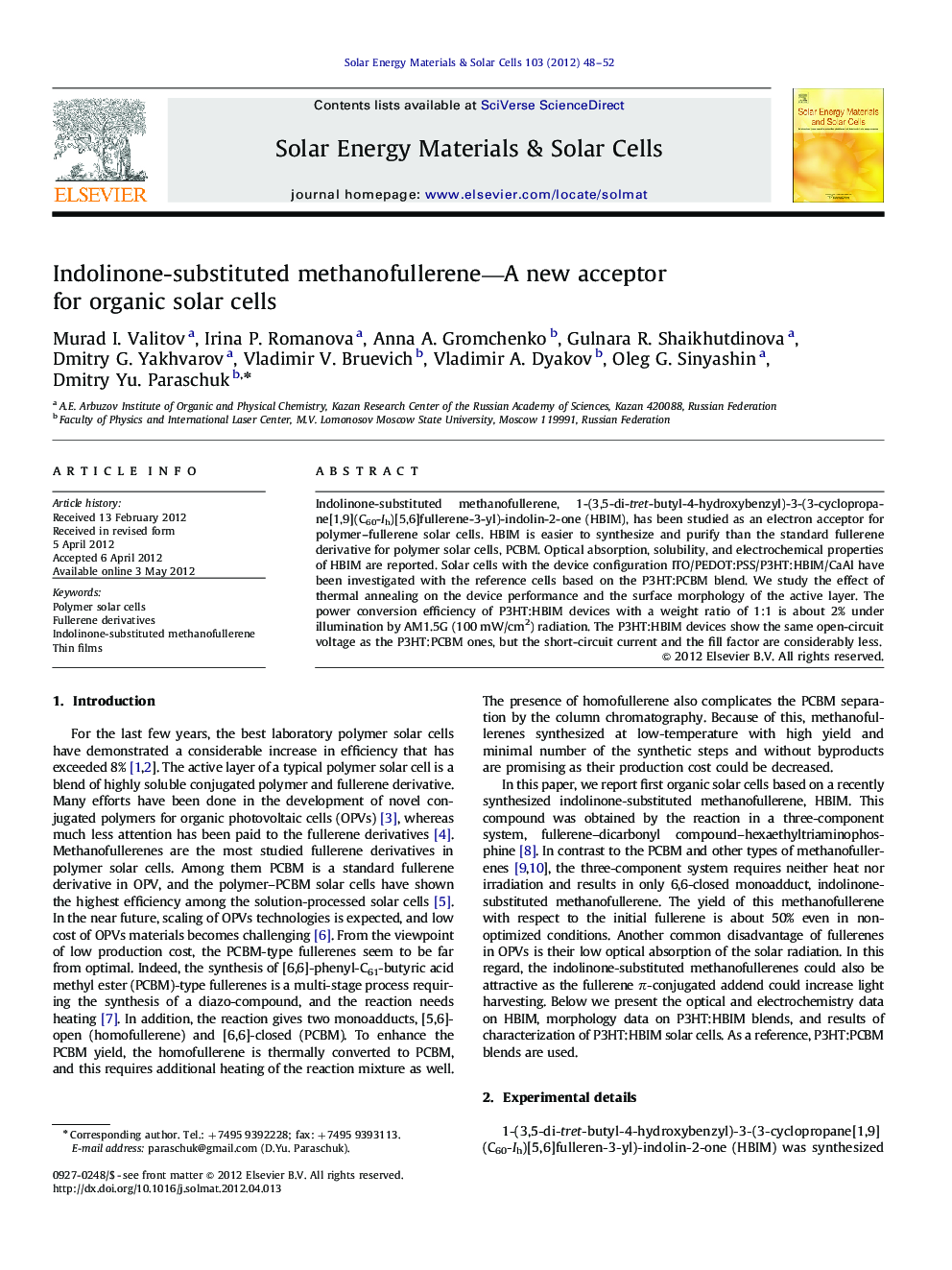| کد مقاله | کد نشریه | سال انتشار | مقاله انگلیسی | نسخه تمام متن |
|---|---|---|---|---|
| 79075 | 49348 | 2012 | 5 صفحه PDF | دانلود رایگان |

Indolinone-substituted methanofullerene, 1-(3,5-di-tret-butyl-4-hydroxybenzyl)-3-(3-cyclopropane[1,9](C60-Ih)[5,6]fullerene-3-yl)-indolin-2-one (HBIM), has been studied as an electron acceptor for polymer–fullerene solar cells. HBIM is easier to synthesize and purify than the standard fullerene derivative for polymer solar cells, PCBM. Optical absorption, solubility, and electrochemical properties of HBIM are reported. Solar cells with the device configuration ITO/PEDOT:PSS/P3HT:HBIM/CaAl have been investigated with the reference cells based on the P3HT:PCBM blend. We study the effect of thermal annealing on the device performance and the surface morphology of the active layer. The power conversion efficiency of P3HT:HBIM devices with a weight ratio of 1:1 is about 2% under illumination by AM1.5G (100 mW/cm2) radiation. The P3HT:HBIM devices show the same open-circuit voltage as the P3HT:PCBM ones, but the short-circuit current and the fill factor are considerably less.
Figure optionsDownload as PowerPoint slideHighlights
► Indolinone-substituted methanofullerene (HBIM) is studied in organic solar cells.
► HBIM is easier to synthesize and purify than the standard PCBM.
► Absorption and electrochemistry data suggest that HBIM can compete with PCBM.
► Power conversion efficiency of P3HT:HBIM cell is 2%.
► The limited efficiency is assigned to non-optimized morphology of the active layer.
Journal: Solar Energy Materials and Solar Cells - Volume 103, August 2012, Pages 48–52